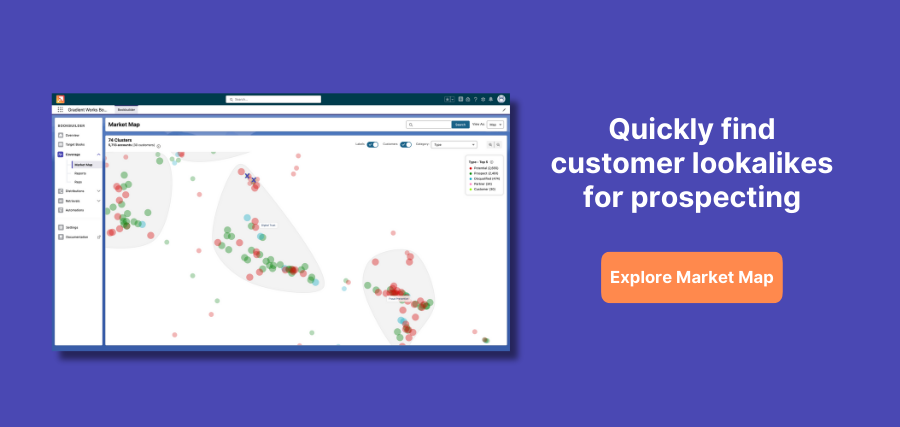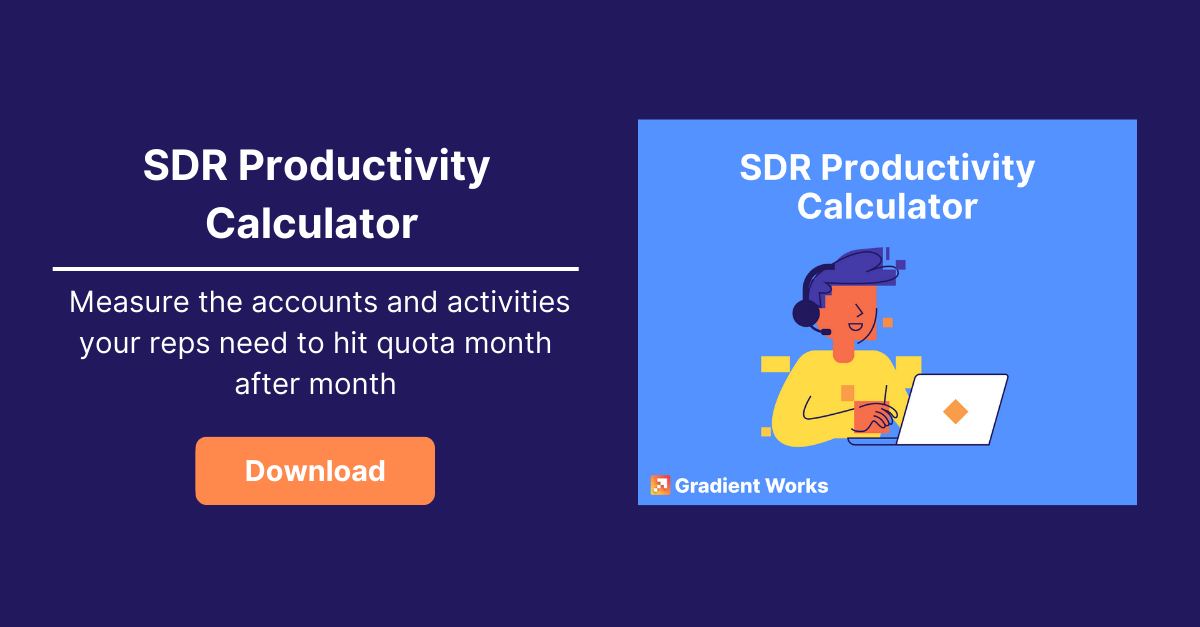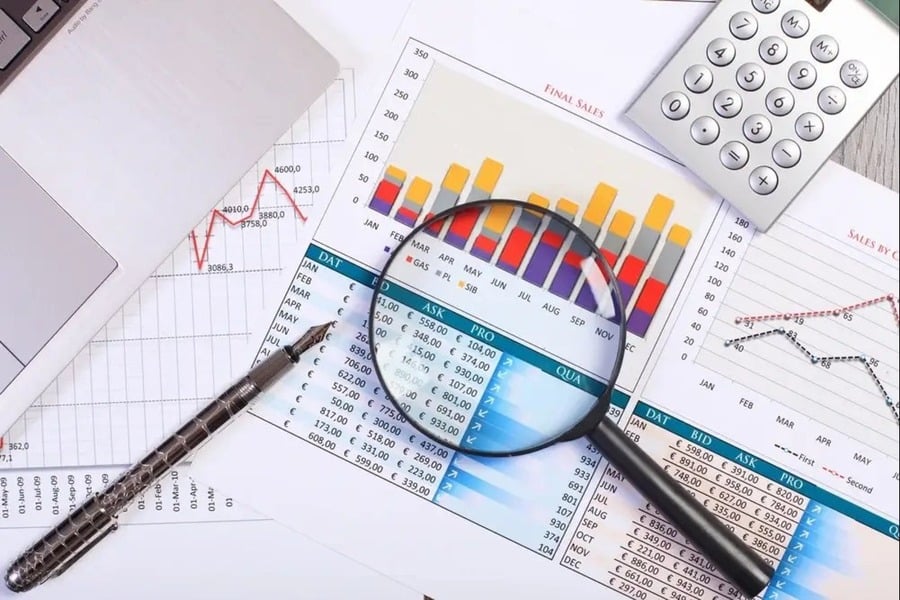Sales Development Representatives (SDRs) have one of the hardest jobs in sales. Outbound SDR outreach is grinding thankless work.
More about the SDR process for outbound
The outbound SDR's role in a sales organization is to proactively reach out to potential customers and initiate conversations with them. Unlike inbound BDRs who respond to incoming leads, outbound SDRs take the initiative to identify and engage with prospects who have not yet expressed interest in the company's products or services, in an attempt to catch their interest.
Here are the key aspects of an outbound SDR's role in the sales process:
-
Prospecting: Outbound SDRs are responsible for identifying potential leads and building a pipeline of prospects. They use various methods such as cold calling, email outreach, social media prospecting, and networking to find individuals or companies who fit the target customer profile. This involves conducting research, leveraging lead databases, and utilizing prospecting tools to identify and gather relevant contact information.
-
Initial outreach: Once potential leads are identified, outbound SDRs initiate the first contact. They craft compelling and personalized messages, whether through phone calls, emails, social media messages, or other communication channels, to capture the prospect's attention and generate interest in the company's offerings. The goal is to start a conversation and engage the prospect in further discussions.
-
Qualification: Outbound SDRs engage in qualification conversations with the prospects to assess their needs, pain points, challenges, and potential fit for the company's products or services. They ask targeted questions to gather information and determine if the prospect meets the criteria for a qualified opportunity. This qualification helps prioritize leads and ensures that the sales team focuses on prospects with a higher likelihood of conversion.
-
Appointment setting: Outbound SDRs play a crucial role in scheduling meetings with qualified prospects for the sales team. By setting up qualified meetings, outbound SDRs enable AEs to engage with prospects who have already shown interest and potential.
-
Relationship building: Outbound SDRs aim to build rapport and relationships with prospects even before they become customers. They follow up on initial interactions, provide relevant information and resources, and address any questions or concerns. Building a positive relationship with prospects helps to nurture leads and increases the chances of conversion over time.
-
Collaboration with Sales Team: Outbound SDRs work closely with the rest of the sales team, including AEs, providing them with detailed information about qualified leads. More on the SDR/AE relationship in the section below.
-
Performance metrics: Outbound SDRs' performance is typically measured based on KPIs that include the number of qualified meetings set or held, meeting-to-opp conversion rates, call/email activity, and their overall contribution to the sales pipeline. More on these SDR metrics below.
Outbound SDRs play a vital role in driving pipeline and setting the stage for successful sales interactions.
The SDR/AE relationship
SDRs and AEs (Account Executives) have a close working relationship within a sales organization. That includes:
-
Lead Handoff: SDRs are responsible for prospecting and qualifying sales leads. Once a lead is qualified and ready to move forward in the sales process, the SDR hands off the lead to an AE. This handoff includes providing detailed information about the prospect's needs, challenges, preferences, and any relevant notes from previous interactions. Frequently, this information is captured in a company's CRM.
-
Collaboration and alignment: SDRs and AEs collaborate closely to align their efforts and goals. They share insights, provide feedback, and discuss strategies for maximizing conversion rates and closing deals. AEs can provide valuable feedback to SDRs about lead quality, lead qualification criteria, and ways to improve the outbound prospecting process.
-
Sales strategy and insights: AEs often rely on SDRs to gather valuable information about prospects during the qualification stage. SDRs have initial conversations with leads, understand their pain points, challenges, and goals, and gather relevant data. They share this information with AEs, enabling them to tailor their sales strategy and approach to meet the specific needs of each lead. These insights ensure AEs can have more meaningful and targeted conversations with prospects, and they can provide value to the larger sales team as a whole as they understand their customer.
-
Pipeline management: SDRs and AEs work together to manage the sales pipeline effectively. SDRs focus on generating/prospecting and qualifying leads, ensuring a healthy flow of potential opportunities for AEs. AEs, on the other hand, take over qualified leads from SDRs and focus on advancing them through the pipeline, conducting sales meetings, providing product demonstrations, negotiating contracts, and ultimately closing deals. The collaboration between SDRs and AEs ensures a smooth progression of leads through the pipeline, maximizing conversion rates and revenue generation.
-
Celebrating success: When a deal is closed, it's a collective success for both SDRs and AEs. The collaboration and efforts of both teams contribute to the achievement of sales targets. Celebrating these successes together leads to a positive working relationship, which positively impacts future success.
A productive SDR/AE relationship is based on collaboration, communication, and alignment.
The ideal ratio of SDRs to AEs will vary depending on factors like your target market and ICP, sales cycle length, and the complexity of your product. However, we generally see most SDR/AE ratios around 2:1 or 3:1, with two or three SDRs supporting each AE. We also recommend a pool model vs a pod model.
What goes into SDR outbound prospecting sales leads?
We know outbound is one of the hardest jobs in sales. It can be difficult to get a prospect's attention. Here are some of the techniques for SDR outreach:
Personalized outreach: Craft personalized and tailored messages for each prospect. Avoid generic templates and demonstrate that you have done your research by mentioning specific details about the prospect's business or challenges. Personalization increases the chances of capturing their attention and engagement.
Multi-channel approach: Use a combination of communication channels to reach your prospects. This includes phone calls, emails, social media platforms such as LinkedIn and Twitter, and even direct mail if it aligns with your target audience. Using multiple channels increases your chances of connecting with prospects and allows you to engage with them in their preferred mode of communication.
Cold calling: Despite its challenges, cold calling can still be an effective prospecting method/technique. Prepare a script that highlights the value proposition of your offering, but be flexible and adaptable to engage in meaningful conversations. Research the prospect beforehand to understand their pain points and how your solution can address them.
Email outreach: Craft compelling and concise email messages that grab attention and generate interest. Personalize the email by mentioning specific pain points or challenges the prospect might be facing and how your product or service can provide a solution. Keep the email concise, clear, and focused on the value you can offer. Follow up with personalized and relevant follow-up emails to increase response rates.
Social selling: Leverage social media platforms like LinkedIn to identify and engage with prospects. Connect with relevant individuals and engage in meaningful conversations by sharing valuable content, participating in industry groups, and commenting on relevant posts. Social selling allows you to establish credibility and build relationships before reaching out directly.
Referrals and introductions: Leverage your existing network to seek referrals and introductions. Ask satisfied customers, industry connections, or colleagues for referrals to potential prospects who could benefit from your offering. Warm introductions have a higher chance of success and trust.
How do I know an outbound SDR is effective?
There are so many metrics that can measure an outbound SDR's impact. You may choose to measure activity rates, meeting sets, opportunities created, contribution to pipeline, or revenue generated. We've got a detailed post with tons of SDR benchmarks here.
This post was generated with help from ChatGPT.





